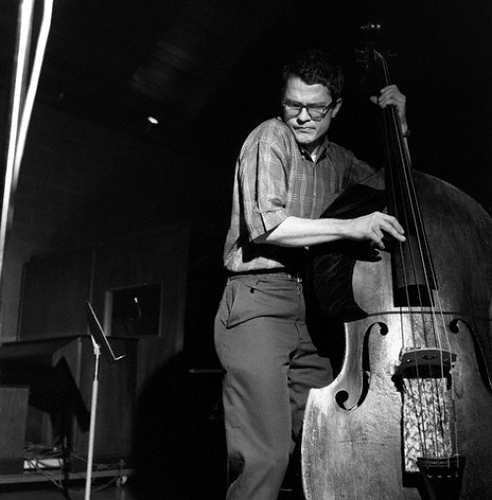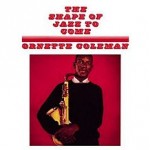i.
1959 was a watershed year for jazz music (arguably the greatest single year for jazz in all history–which is saying a lot). Here’s a taste: Miles Davis Kind of Blue, John Coltrane Giant Steps, Charles Mingus Ah Um. That is like the holy trinity of jazz music; all from the same year. But in the not-so-silent shadows a young, relatively unknown alto saxophonist was poised to cause a stir that still reverberates today: Ornette Coleman’s provocatively titled The Shape of Jazz to Come.
Kind of Blue is correctly celebrated for establishing modal music, and a genuine evolution from bop and post-bop; Giant Steps is the apotheosis of the “sheets of sound” that John Coltrane had been practicing and perfecting for a decade; Ah Um is an encyclopedic history of jazz music, covering everyone and everything from Jelly Roll Morton to Duke Ellington. And each of those albums were immediately embraced, and remain recognized as genuine milestones today. But The Shape of Jazz to Come was incendiary and complicated: it inspired as much resistance as it did inspiration. Some folks (Mingus included) bristled that it was all so much sound and fury, signifying…little. But what Coleman (along with trumpet player Don Cherry, bassist Charlie Haden and drummer Billy Higgins — representing as solid a quartet as any that have made music, ever) achieved was, arguably, the most significant advancement since Charlie Parker hit the scene.
Of course, Parker was also misunderstood and dismissed when his frenetic, almost incomprehensibly advanced alto saxophone assault began to cause scales to drop from audiences’ eyes — if not their ears. Like any genuine iconoclasts of the avant garde, Parker and Coleman were not being new for newness sake; they had to fully grasp and master the idiom before they could transcend it. Tellingly, what was revolutionary and almost confrontational, then, seems rather tame and entirely sensible, now. Of course, it didn’t take 50 years for Coleman to resonate: he not only found his audience, John Coltrane –the all-time heavyweight champion– embraced his compatriot. He endorsed, and, crucially, he imitated. The Book of Revelation that Coltrane’s mid-’60s Impulse recordings comprise did, in many respects, grow directly out of the opening salvo fired by Coleman in ’59.
ii.
Topic: The Album You’d Give Anything To Hear Again for The First Time
I still remember everything about it.
Fall semester, senior year. The more I learned at college, the more I understood how little I knew. Something, obviously, was working.
I was wise, prescient or just plain lucky enough to sign up for an elective called “Introduction to Jazz”. I knew the genre was vast, intimidating and would take considerable effort to navigate; I’ll always credit this class for giving me a framework to acquaint myself, a three credit Rosetta Stone® for my Rosetta Stone. We’d gone through the century, decade by decade, and it got better as we went. Yes, Bebop was what I’d been missing all along without realizing it.
But it was what came next, the more formless expression that started creeping out of the margins like lava oozing through ancient stones, that portended obsession. Those names: Mingus, Monk, Miles, Trane. And then, as we tackled the topic of “free jazz”, a cat who had the audacity to name his 1959 (the best year in musical history, by the way) album The Shape of Jazz to Come.
Ornette Coleman, the canary in the post-bop coal mine. Like all iconoclasts, initially greeted with indifference, then disgust, then fear. Chords? We don’t need no stinking chords, his compositions scoffed, a freak flag flying out of the underground into the avant-garde. I still remember how quiet the room was and how concerned my ears got: What is this? Like nothing I’d never heard or felt; a new language, a new sensation, a new way of seeing everything, that first amoeba slithering onto shore. How is it possible, I thought, to make instruments scream in agony and shriek in joy, at the same time? (And those song titles, telling everything you needed to know: “Lonely Woman”, “Congeniality”, “Focus on Sanity.”)
I walked around campus after, the autumn sky all schizophrenic yet serene with colors. And those notes I couldn’t get out of my head. This is it, I thought. This is music. This is addiction. This is love. This is the first day of the rest of my life.
From The Weeklings feature Popped Culture #2
iii.
Bonus bliss:


